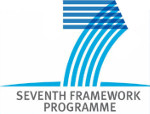Identification of aminopyrimidine-sulfonamides as potent modulators of Wag31-mediated cell elongation in mycobacteria
Singh, Vinayak ; Dhar, Neeraj ; Pató, János ; Kolly, Gaëlle S. ; Korduláková, Jana ; Forbak, Martin ; Evans, Joanna C. ; Székely, Rita ; Rybniker, Jan ; Palceková, Zuzana ; Zemanová, Júlia ; Santi, Isabella ; Signorino-Gelo, François ; Rodrigues, Liliana ; Vocat, Anthony ; Covarrubias, Adrian S. ; Rengifo, Monica G. ; Johnsson, Kai ; Mowbray, Sherry ; Buechler, Joseph ; Delorme, Vincent ; Brodin, Priscille ; Knott, Graham W. ; Aínsa, José A. (Universidad de Zaragoza) ; Warner, Digby F. ; Kéri, G. ; Mikušová, Katarina ; McKinney, John D. ; Cole, Stewark T. ; Mizrahi, Valerie ; Hartkoorn, Ruben C.
Resumen: There is an urgent need to discover new anti-tubercular agents with novel mechanisms of action in order to tackle the scourge of drug-resistant tuberculosis. Here, we report the identification of such a molecule – an AminoPYrimidine-Sulfonamide (APYS1) that has potent, bactericidal activity against M. tuberculosis. Mutations in APYS1-resistant M. tuberculosis mapped exclusively to wag31, a gene that encodes a scaffolding protein thought to orchestrate cell elongation. Recombineering confirmed that a Gln201Arg mutation in Wag31 was sufficient to cause resistance to APYS1, however, neither overexpression nor conditional depletion of wag31 impacted M. tuberculosis susceptibility to this compound. In contrast, expression of the wildtype allele of wag31 in APYS1-resistant M. tuberculosis was dominant and restored susceptibility to APYS1 to wildtype levels. Time-lapse imaging and scanning electron microscopy revealed that APYS1 caused gross malformation of the old pole of M. tuberculosis, with eventual lysis. These effects resembled the morphological changes observed following transcriptional silencing of wag31 in M. tuberculosis. These data show that Wag31 is likely not the direct target of APYS1, but the striking phenotypic similarity between APYS1 exposure and genetic depletion of Wag31 in M. tuberculosis suggests that APYS1 might indirectly affect Wag31 through an as yet unknown mechanism.
Idioma: Inglés
DOI: 10.1111/mmi.13535
Año: 2017
Publicado en: MOLECULAR MICROBIOLOGY 103, 1 (2017), 13-25
ISSN: 0950-382X
Factor impacto JCR: 3.816 (2017)
Categ. JCR: MICROBIOLOGY rank: 35 / 125 = 0.28 (2017) - Q2 - T1
Categ. JCR: BIOCHEMISTRY & MOLECULAR BIOLOGY rank: 84 / 292 = 0.288 (2017) - Q2 - T1
Factor impacto SCIMAGO: 2.384 - Molecular Biology (Q1) - Microbiology (Q1)
Financiación: info:eu-repo/grantAgreement/EC/FP7/260872/EU/More Medicines for Tuberculosis/MM4TB
Financiación: info:eu-repo/grantAgreement/EUR/IEF/PIEF-GA-2012-327219
Tipo y forma: Artículo (PostPrint)
Área (Departamento): Área Microbiología (Dpto. Microb.Med.Pr.,Sal.Públ.)
 Derechos reservados por el editor de la revista
Derechos reservados por el editor de la revista
Exportado de SIDERAL (2019-07-09-11:29:36)
Visitas y descargas
Idioma: Inglés
DOI: 10.1111/mmi.13535
Año: 2017
Publicado en: MOLECULAR MICROBIOLOGY 103, 1 (2017), 13-25
ISSN: 0950-382X
Factor impacto JCR: 3.816 (2017)
Categ. JCR: MICROBIOLOGY rank: 35 / 125 = 0.28 (2017) - Q2 - T1
Categ. JCR: BIOCHEMISTRY & MOLECULAR BIOLOGY rank: 84 / 292 = 0.288 (2017) - Q2 - T1
Factor impacto SCIMAGO: 2.384 - Molecular Biology (Q1) - Microbiology (Q1)
Financiación: info:eu-repo/grantAgreement/EC/FP7/260872/EU/More Medicines for Tuberculosis/MM4TB
Financiación: info:eu-repo/grantAgreement/EUR/IEF/PIEF-GA-2012-327219
Tipo y forma: Artículo (PostPrint)
Área (Departamento): Área Microbiología (Dpto. Microb.Med.Pr.,Sal.Públ.)
Exportado de SIDERAL (2019-07-09-11:29:36)
Enlace permanente:
Visitas y descargas
Este artículo se encuentra en las siguientes colecciones:
Artículos > Artículos por área > Microbiología
Registro creado el 2019-05-29, última modificación el 2019-07-09
